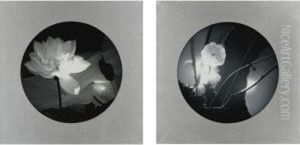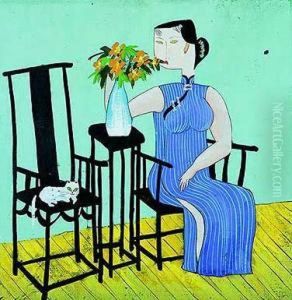Xu Yang Paintings
Xu Yang was a Chinese painter active during the Qing Dynasty, specifically during the reign of the Qianlong Emperor. Born in 1712, Xu Yang's exact date of death is not recorded, but his life and career were situated in the 18th century. He is particularly renowned for his panoramic and detailed paintings that depict grand imperial narratives and court life.
Xu Yang was originally from Suzhou, a city with a rich cultural and artistic heritage, often celebrated for its classical gardens and as a center for literati painting and culture. This environment likely influenced Xu Yang's artistic development. Trained in the traditional Chinese painting techniques, Xu Yang mastered the fine brushwork and ink-wash painting that characterized Chinese art of the period. Xu Yang's works often exhibited a meticulous attention to detail and a grandeur that aligned with the imperial court's taste and the Qianlong Emperor's desire to document and glorify his reign.
One of Xu Yang's most famous works is the 'Prospect of the Capital' (also known as 'The Qianlong Emperor's Southern Inspection Tour'), a series of scroll paintings commissioned by the Qianlong Emperor to commemorate his inspection tours of the south. These intricate paintings not only showcase the grandeur of the landscapes and architecture but also serve as historical documents of the time, capturing the pageantry of the emperor's processions and the daily activities of the people within the empire.
Little is known about Xu Yang's personal life or training, as records from that period focused more on the works and the patrons rather than the artists' biographies. However, Xu Yang's contributions to Chinese art are significant, and his works remain a valuable resource for understanding the history and culture of China during the Qing Dynasty. Xu Yang's paintings are held in various museum collections and continue to be studied by art historians and scholars interested in the period. The lack of information on his death suggests that he was not as celebrated in his later years or after his death as he was during his professional peak, which was not uncommon for artists of the era.



